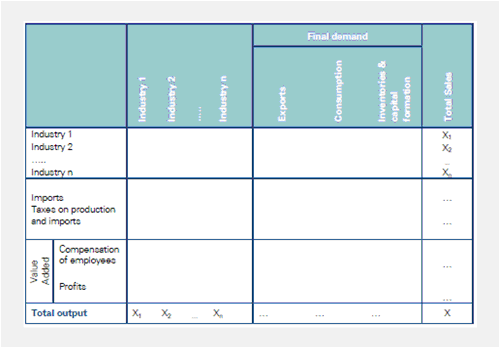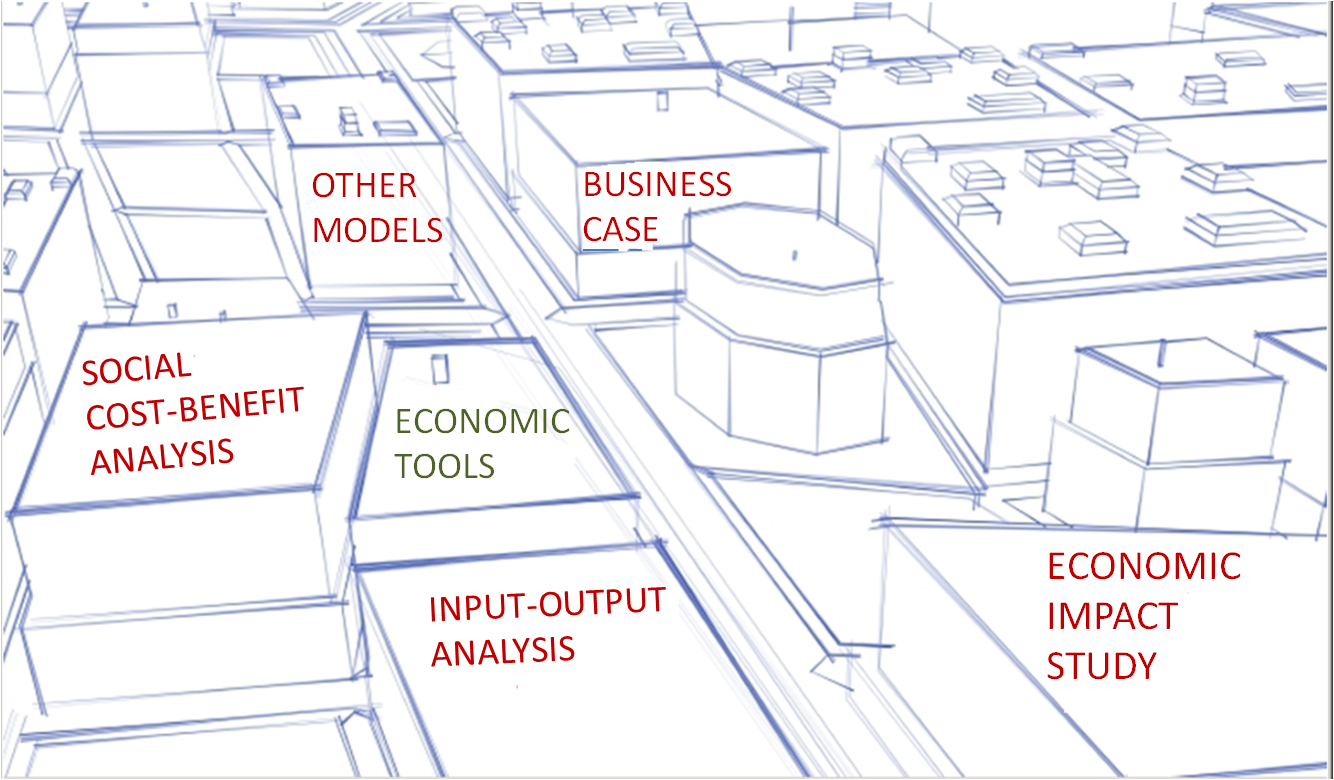Input-output analysis
Contents
Input-output analysis
Industries use the products and services of other industries to produce their own products. A construction company, for instance, will buy building materials from several different suppliers, and these suppliers, in turn, will buy their inputs from suppliers further down the industry chain. An input-output model is a quantitative economic tool that captures these interindustry transactions. It contains large tables of data that describe the interindustry transactions in defined areas. These tables help the users to track the flow of money (in this case triggered by a development plan or existing urban object) from one industry to the next. The technique of Input-output analysis is originally created by Wassily Leontief (1965).
For more information about input-output analysis:
- Wikipedia: Input-output models
- Website: Pearson education. Inc
Input-output table
Based on the supporting report, an input-output table is created (see figure below). This table is used to calculate the infinite circulation of capital through inter-industry transactions (indirect effects) and internalizing the wages and transactions of households (induced effects). Since in each round capital flows out of the system (taxes, import and wages), the impact becomes gradually smaller and tends to zero in the end. This results in the so-called Leontief multipliers.
Table: Concept of an input-output model

Multiplier effects
The multipliers of the input-output model provide an indication of what the indirect and induced effects are of an extra unit of expenditure (the direct impact).
There are two main types of multipliers:
- Type I: is the multiplier of the indirect effects (compared to the direct impulse). For example, if an urban project development of 1 million euro leads to an additional 0.5 million euro of indirect production, the type I multiplier is 1.5;
- Type II: is the multiplier of the induced effects (compared to the direct impulse). For example, if an urban project development of 1 million euro generates an additional consumption spending by employees of 250.000 euro, the type II multiplier is 1.25.
Related subjects
Urban planning processes employ a host of economic tools/models (see clickable map):
Other related subjects:
Footnotes and references
MAP
<websiteFrame> website=http://securipedia.eu/cool/index.php?wiki=securipedia.eu&concept=Input-output analysis height=1023 width=100% border=0 scroll=auto align=middle </websiteFrame>
<headertabs/>

